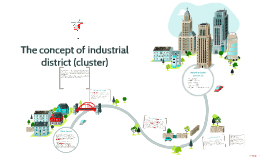Green City
Transcript: The End Information on what makes a city green efficient The tasks that we had to complete had some very aggravating parts with them, but we managed to complete them successfully. Here is an example of one of these successes, when we made Green City turn on our 3rd try. success Renewable resources in Avon are wind energy, solar energy, biogas energy, biomass energy, and Cellulosic Ethanol energy. Nonrenewable resources in Avon are coal, natural gas, nuclear, and petroleum. To save energy you can change to compact fluorescent light bulbs, reduce air conditioning usage in the summer and heating usage in the winter, change habits, like turning off the lights when you leave a room, reduce, reuse, & recycle. Avon trash is hauled by Republic Services, Inc. and taken to a transfer station, an Incinerator, landfill, or recylcing center. Our group solved the problems and successfully completed the tasks by communicating, respecting everyone's ideas, encouraging each other, having specific roles, and working together. The difficulties did we encountered were getting the right measurements to get the robot to move in the right direction or spot and also, to follow the path we wanted to. One of our first programs/attempts was task two, which was getting green city to activate. In this task we first weren't able to get the correct measurements and angles so we weren't able to activate green city . In our successful attempt/ program we were able to activate Green City because we got the right measurements We learned that computer programming/programming with our robot was very difficult but we managed to learn to program the robot b working together and using our past knowledge. Problem solving is an extremely important quality to have as students as well as in the real word. We learned about problem solving in various issues we encountered such as not getting the correct measurements or having manual issues, such as sensor problems. In the picture can see our fabulous group, also known as the one and only Quad Squad. You can see our lovely prezi producer, Michelle (Marshmichello), our robot engineer and computer programer Sam (Pretty, Pretty, Princess), our Technical writer Melanie (Malone), our team manger Brooklyn (Cookie), and last but not least robot number 3... BURTHA! Picture Time! Yet another successes. All these challenges we completed were a little tricky due to all the difficulties we had such as in the next slide, but lets just focus on the good times. Like I said unfortunately, not every task was as easy. Unsuccessfully Success Green City By: Michelle W, Brooklyn W, Melaine N, & Sam S A problem with nonrenewable resources that eventually it will run out. This is a problem because some renewable resources are very important such as gas. One disadvantage with renewable energy is that it is difficult to generate the quantities of electricity that are as large as those produced by traditional fossil fuel generators. This may mean that we need to reduce the amount of energy we use or simply build more energy facilities. It also indicates that the best solution to our energy problems may be to have a balance of many different power sources. Challenges From Green City

















